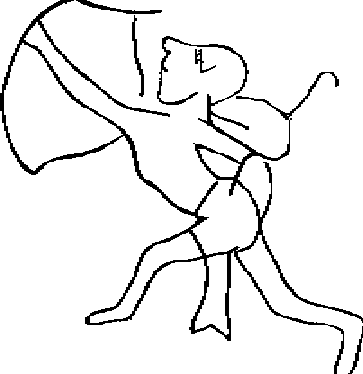
Very ancient rock engraving of a female(?) archer from Wadi In Habeter in southwestern Libya. |
|
The Berbers are not a closed ethnic group, but consist of numerous, partly very different groups. Moreover, they are distributed across a huge region which reaches from western Egypt to the Atlantic coast of Morocco. Even on the Canaries there had existed Berbers - the so-called Guanches, but there had been exterminated in the course of time.
Although the Berbers had been Islamized more than 1000 years ago they succeeded in preserving their unique way of life and their special civilization. Actually, it is very amazing that the Berber women could keep their high social status in Berber society withstanding the strong influences of patriarchal Muslim culture. This is already obvious by the fact that - in contrast to other patriarchal people - the education of the girls is of great importance. In fact, there are the Berber women who can read and write, do poetry. Also in case of matchmaking the women are the active part, they choose their husbands. Therefor it is not very astonishing that there existed famous Berber queens who were also military leaders. The most famous of them, Kahina and Tin Kahina, will be treated in detail. |
|||
 |
Kahina
One of the most famous figures of Berber history is Kahina. This Berber chief from the Aurès in eastern Algeria, presumably of Jewish origin, led the resistance of the Berbers to the Arabs in the seventh century and proved herself to be a very dangerous opponent. Kahina - the name means «prophetess» - mobilized the Berber of the Aurès and formed a powerful army. Under her leadership the Berber troops were able to defeat the Arabs severely several times. This fierce Berber resistance was the reason that the Arabs founded Tunis. Only with great efforts the numerically superior Arabs succeeded in defeating Kahina and killing her in the end. Her determination in resisting the Arabs by all means becomes quite obvious by the fact that she even surrendered her sons to the Arabs to keep her freedom. Maybe this is also a hint that Kahina was leading a Berber people with a society that valued women more than men. |
||
 |
Tin Hinan - African Amazon Queen
The ancestress of the Tuaregs was a woman, who possessed many characteristics of an Amazon queen. Her name was Tin Hinan. |
||
 |
The Tuaregs
The strongest impression of genuine Berber culture conveys the people of Tuareg. This people lives in the Sahara desert and because of its seclusion could preserve its uniqueness. Only in the beginning of the 20th century the French succeeded in subduing this proud people! |
||
|
Mâyu - the spring festival of the women in Tozeur
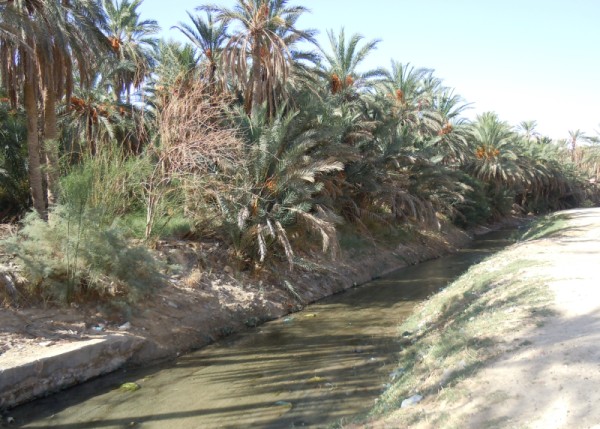
Oued in Tozeur
It is quite obviously a festival with the focus on women. The scientists mainly agree that the origin must be a pre-Islamic vegetation festival. Already the date in May hints at its fertility nature. It is very remarkable that it is a women's festival and actually exclusively for women. It is all the more amazing because Tozeur is totally Islamic. The only role of the men at the festival is to set up the swings.
It is a festival of young women and girls but also of married women. The main event takes place at the Oued, the lifeline of Tozeur. Without these natural water resources Tozeur could not exist. Water is undoubtedly connected with fertility. Without water there would be no vegetation and no life in the Djerid region.
The sprinkling with the valuable water of the Oued is to be interpreted as a fertility ritual. The fertility of vegetation is connected with the fertility of women.
The exclusion of the rich women from this ceremony hints at the egalitarian meaning of the festival. It is even possible that it implies a latent reminiscence of a past egalitarian civilization which revives for one day a year with this festival.
| |||
|
Even today there are amazing parallels between the Berbers and the tradition of the Amazons.
So there are fascinating Berber fortresses which have a strong
resemblance to the picture of the Themiskyra fortress
on a Greek vase. The conformity of tower battlements on both representations is very remarkable!
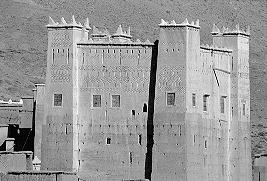
Berber fortress from Morocco
But even in social life of the Berbers there persisted elements of their unique culture.
For the most part only the Berber women are literate and exclusively they know to write
a special alphabet, the Tifinagh, which is founded upon the
ancient Libyan writing.
|
|||
|
|||
 |
Giresun Adasi Project |  |
| B o o k s | |
|
Gerhard Pöllauer: The Lost History of the Amazons Recent research findings on the legendary women nation ISBN: 978-1-4461-9305-1; Paperback, 148 pages, 87 black-and-white pictures, 3 illustrations Price: $17.48
This book focuses on the numerous traces of the Amazons.
It reports on latest findings and investigation in the legendary homeland of the Amazons at the
river Thermodon and on the Amazon island Lemnos. |
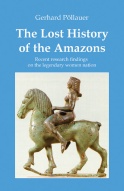
|
|
Gerhard Pöllauer, Geheimnisvolles Lemnos. Die von Frauen beherrschte Insel (Mysterious Lemnos. Island dominated by women) ISBN: 978-3-902096-77-7; Paperback, 128 pages, 97 black-and-white pictures, 3 color photos, 1 map Price: EUR 13.00
The rather unknown North Aegean island Lemnos amazes with its great prehistoric past.
About 5000 years ago there existed a highly-developed civilization which created imposing cities,
mighty rock buildings and impressive sanctuaries on this Greek island. The discovery of Poliochni was sensational.
Because of its largeness and refinement this Bronze Age settlement is regarded as the most ancient city of Europe.
Also the discoveries at Myrina in the west and Hephaistia in the north witness the island's
prehistoric importance. Presumably there was a further city in the Northeast - Chryse, which was sunken under the sea.
|

|
|
The Berbers
This comprehensive overview shows these disparate peoples in their immediate social environments and how they retained a separate identity among more dominant cultures.
|
|

|

|

|
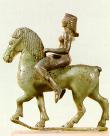
|

|

|

|

|
Picture Gallery and Books *** Our Projects *** About Us Copyright © 1997-2025 Amazon Research Center |

|